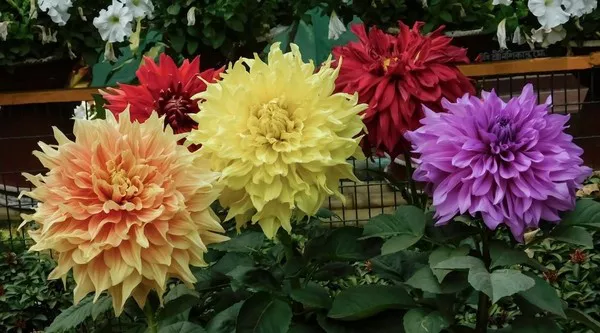Flowers have long been used as a means of communication, expressing emotions, and conveying messages. Among the diverse array of flowers, the hydrangea stands out not only for its captivating beauty but also for its rich symbolism that varies across cultures and contexts. In this article, we delve into the profound meaning of the hydrangea flower, and the significance it holds in different parts of the world.
The Enigmatic Language of Flowers
Flowers have a unique language that transcends verbal communication. Throughout history, different flowers have been assigned specific meanings, enabling people to convey emotions, thoughts, and wishes without uttering a single word. This secret language of flowers, known as floriography, found popularity in the Victorian era and continues to influence floral gifting and arrangement choices today.
A Multitude of Meanings
1. The Color Palette: One of the most intriguing aspects of the hydrangea’s symbolism lies in its color variation. The flower can come in shades of blue, pink, purple, white, and even green. Each color carries a distinct message. Blue hydrangeas are often associated with depth, emotion, and understanding, making them a popular choice for expressing heartfelt emotions. On the other hand, pink hydrangeas symbolize love, gratitude, and femininity, making them a common choice for romantic gestures and gestures of appreciation.
2. Gratitude and Thankfulness: Across different cultures, hydrangeas are widely associated with expressions of gratitude. The abundance of petals in a single bloom is often seen as a symbol of gratefulness for the recipient’s presence in one’s life. This makes hydrangeas a popular choice for thank-you bouquets and gifts that convey appreciation.
3. Understanding and Emotional Connection: With their intricate structure and captivating appearance, hydrangeas also hold meaning related to understanding and emotional connection. The multi-petaled blooms are thought to represent the complexities of human emotions and the depth of relationships. This symbolism makes them fitting choices for occasions that celebrate empathy, compassion, and the bonds between individuals.
Cultural Significance and Interpretations
1. Japanese Culture: In Japan, the hydrangea, or “ajisai” in Japanese, carries deep cultural significance. It is associated with gratitude, heartfelt emotions, and understanding. The flower’s ability to change colors based on the soil’s acidity level is seen as a representation of change and the fleeting nature of emotions. Hydrangeas are often featured in art, literature, and festivals, such as the Ajisai Matsuri, dedicated to celebrating the flower’s beauty.
2. Korean Culture: In Korea, hydrangeas are associated with vanity and boastfulness. The term “mulhyanggu” is used to describe someone who seeks attention and praise, drawing parallels to the showy appearance of the hydrangea bloom. This unique interpretation showcases the diversity of meanings that flowers can hold within different cultural contexts.
3. Western Influence: In Western cultures, hydrangeas have evolved to symbolize various emotions, including heartfelt sincerity, grace, and beauty. White hydrangeas are often used in weddings, symbolizing purity and unity, while pink hydrangeas are given as tokens of love and appreciation. Additionally, the ability of hydrangeas to change color based on the soil’s pH level has sparked fascination and further enriched their symbolism.
Hydrangeas in Literature and Art
1. Literary References: Throughout literature, hydrangeas have made appearances that reflect their symbolism. Authors have employed the flower to convey emotions and themes within their stories. Its versatility in representing diverse emotions, from gratitude to understanding, allows writers to weave complex layers of meaning into their narratives.
2. Artistic Depictions: The hydrangea’s captivating beauty has also inspired artists across various mediums. Painters, photographers, and illustrators have all found inspiration in the intricate petals and the play of colors within a single bloom. The flower’s symbolism adds depth to artistic creations, allowing artists to communicate emotions and messages through their work.
Hydrangeas in Modern Society
1. Floral Arrangements: In contemporary floral arrangements, hydrangeas remain a popular choice for their lush appearance and layered symbolism. They are often combined with other flowers and foliage to create visually appealing and meaningful bouquets for various occasions.
2. Weddings and Celebrations: Hydrangeas continue to be a favored choice for weddings, embodying purity, grace, and heartfelt emotion. Their ability to be dyed to match specific color schemes has made them a versatile option for floral decor in celebratory events.
3. Gardening and Landscaping: Beyond their symbolism, hydrangeas are beloved for their aesthetic appeal in gardens and landscapes. Gardeners appreciate their versatility, as they can thrive in various soil types and climates. The hydrangea’s ability to change color based on soil acidity adds an element of surprise and intrigue to garden design.
Conclusion
The hydrangea flower’s symbolism is as multifaceted as its colors and interpretations. From expressions of gratitude and understanding to representations of emotion and change, the hydrangea resonates with people across the globe. Its significance varies widely within different cultures, making it a testament to the intricate language of flowers and their ability to convey complex sentiments without words. As society evolves, the hydrangea’s timeless beauty and profound symbolism continue to flourish, reminding us of the enduring power of nature’s messages.


